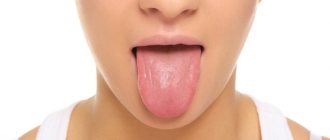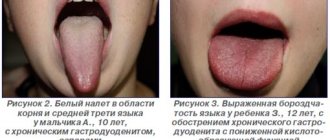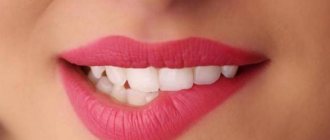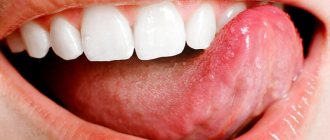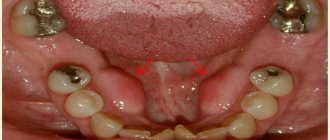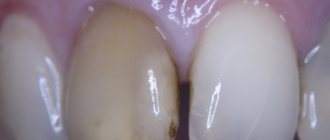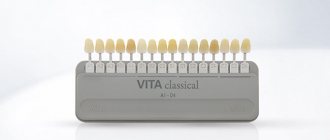In many ancient states where medicine was developed, people believed in hidden connections between various organs. Some doctors have tried to find answers about a person's health by examining their tongue. Science has evolved, and many views on diagnosing diseases by language have changed, but even modern doctors are finding evidence of this connection.
Modern doctors believe that certain properties of the tongue do not indicate an accurate diagnosis, but they help to find out the direction of diagnosis . So from time to time it is advisable to look at this organ and consult a doctor if its color or shape changes.
Tongue color
Pale pink. The color of a healthy tongue.
Pale. Talks about malnutrition, vitamin deficiency, chronic diseases, anemia.
Reddish - infectious, inflammatory diseases.
Bright red. Disturbances in the functioning of the cardiac system, blood diseases.
Yellow. Problems with the gastrointestinal tract, jaundice. It also happens to smokers.
Bluish or purple. Diseases of the lungs and heart.
Blue color can also signal kidney disease.
White. Dehydration, fungal infection, flu or cold.
Grey. Diseases of the digestive tract.
Diagnostic signs
If vital processes are balanced, the body functions without failures, the human tongue has a healthy appearance. This is manifested in its smooth, velvety surface, uniform pink color and transparent coating of saliva. There should be no discomfort, burning, tingling or lack of sensitivity in any areas.
Photo: tongue of a healthy person
In the human body, pathologies are determined by the following characteristics:
- Color and its uniformity on the surface of the tongue.
- Smell, color and consistency of plaque.
- Relief.
- The shape of the organ and the lines in the middle.
- Movements.
- Sensation of taste.
Diagnosis of health using the tongue should be carried out as follows: stick it out as much as possible, look in the mirror and analyze all the indicated characteristics. The sensations of taste and touch, as well as the accumulation of plaque, should be monitored throughout the day. All features that were identified should be compared with text descriptions.
If the patient tells the doctor about changes in health status and language diagnostic results, he is prescribed an examination to clarify the diagnosis.
Correspondence of tongue zones to internal organs
Ancient Chinese doctors determined that each section of this muscular organ is associated with a specific element. Modern medicine has established how the areas of the human tongue are associated with diseases of the internal organs. The correspondence is shown in the table:
| Zone | Element | Organs |
| Tip of the tongue | Fire | Small intestine, heart muscle |
| Transverse stripe between tip and central area | Metal | Colon, immunity, respiratory system |
| Middle | Earth | Stomach, spleen, pancreas |
| Sides | Tree | Gallbladder, liver |
| Rear end | Water | Organs in the lower abdomen, reproductive and urinary systems |
| Fold dividing the tongue into left and right parts | — | Spine |
For a more informative diagnosis, it is necessary to take into account both the general condition of the tongue and the condition of its individual sections. It is important to understand that the doctor draws conclusions not only from indirect external changes, but also from the results of laboratory and instrumental studies, and when making a diagnosis, one should rely more on conclusions confirmed by analyzes.
Diagnosis by color: what does the color of the tongue mean?
The color of this organ partly depends on the shade of its own tissues, and partly on the plaque accumulated on it. By studying the color of the tongue, you can determine what this sign indicates and go to a therapist to check your assumptions. Below is a comparison of the color of tongue coating and diseases that may be associated with it:
- A coated yellowish tongue is a symptom of improper functioning of the liver, gastrointestinal tract and a sign of people who smoke.
- Bright red plaque indicates the presence of hematological and cardiovascular pathologies.
- A reddish coating is a sign of inflammation of infectious or non-infectious origin.
- A dark red coating is a manifestation of intoxication.
- A red tip of the tongue is a symptom of pelvic organ diseases.
- Burgundy plaque – the presence of acute infections.
- Crimson – a manifestation of a severe infection with severe fever.
- A blue or purple tongue is a symptom of lung or heart disease.
- Blue plaque is a sign of kidney disease.
- Gray – the presence of chronic gastrointestinal diseases.
- Black plaque is a sign of infection with a chromogenic fungus or a state of acidosis.
- Pallor is a symptom of fungal infection, acute respiratory viral infection, anemia, tissue dehydration, and exhaustion of the body.
- A pale underside of a person’s tongue is a sign of liver disease and the associated gallbladder.
- A dirty gray coating is a consequence of the vital activity of parasites.
Presence of stains
In some diseases, the color of the tongue is uneven; distinct or unclear spots and stripes may be observed:
- The presence of red and white spots indicates the presence of scarlet fever.
- White spots on the edges or over the entire surface indicate the development of thrush.
Thrush on the tongueWhite scaly spots on the tongue indicate the presence of lichen planus.
- White spots on the lower part of the tongue are observed with vascular diseases of the brain or with oxygen starvation.
- The presence of one round white spot indicates a shift in the acid-base balance of gastric juice.
- A red spot on the tip of the tongue or along the edges is an injury caused by rough food or biting with teeth.
- Red dots on the top indicate mononucleosis or problems with hematopoiesis.
- Reddened areas with horny scales are a likely sign of a tumor.
- A red spot surrounded by yellowish blisters is a symptom of erythema.
- Reddened areas on a dry tongue are a sign of brain disease.
- Red blisters around the edges are a symptom of herpes.
- Yellow spots are a sign of inflammatory processes, diseases of the hematopoietic organs, oncology, necrosis, and a consequence of smoking.
- Purple areas indicate blood stagnation.
- Brown spots are a sign of a circulatory system disease or bleeding in the mouth.
- Blue spots are a sign of hemangioma, intoxication or blood diseases.
- Blackening of individual areas is a sign of chemical burns, a consequence of smoking, long-term use of antibiotics, stomatitis or gastrointestinal disorders.
Diagnostics by form
The definition of a human disease by language is also based on an analysis of its outline and shape of the midline:
| Tongue shape | Definition of disease by language |
| Thin | Metabolic failures |
| Thick | Dysfunction of the gastrointestinal tract and liver |
| Long | Heart problems |
| Convex | Pulmonary pathologies |
| Hydropic | Disturbed digestive processes |
| Midline curvature | Spine pathologies |
| One side of the tongue is adjacent to the cheek | Pathologies of cerebral circulation, strokes |
| The tongue has changed shape and relief | Hypo- or vitamin deficiency |
It is difficult for a person without medical education to determine from photographs or descriptions which organ shape is normal for him. Thus, a thick tongue can be mistaken for swelling. Therefore, you should not draw conclusions about your health status and treatment on your own ; it is better to consult a doctor and tell him about your assumptions.
Nature of the relief
Normal taste buds form a smooth, velvety surface. By the relief of the tongue you can determine the disease in an adult or child, how to do this:
Photo: symptom of “varnished tongue”Excessive roughness indicates dehydration, problems with the salivary glands, overdose of antibiotics, atropine drugs or fat-soluble vitamins.
- Increased roughness on a person’s dry tongue, sometimes with tooth marks, can indicate a gastrointestinal disease, such as appendicitis, intestinal infections, and ulcerative pathologies. If cracks and uneven edges are added to the dryness, this is a possible sign of diabetes.
"Cardinal's language"The “varnished tongue” symptom, in which the surface becomes excessively smooth due to atrophy of the taste buds, is observed with colitis, stomach cancer or problems with the absorption of vitamin B
- Diagnosis by the color of the tongue and its relief is clear in case of pellagra - hypovitaminosis of nicotinic acid and vitamin B. The tongue looks ribbed due to cracks and is covered with a brown coating that is difficult to remove. The scarlet "cardinal tongue" shown in the image to the right then forms. At a later stage, a “varnished tongue” appears.
Photo: “geographical language”Alternating normal and inflamed papillae form a “geographic tongue” - a peculiar pattern with grooves that is more common in children with allergies or mental disorders. The projection of spots onto internal organs will help diagnose which organ suffers from food allergies, vitamin deficiency, and atopic dermatitis.
Movement and sensitivity
Normally, a person moves his tongue without difficulty, without trembling or muscle pain . If there are diseases of the nervous system and neurasthenic syndromes, characteristic trembling appears, and with strokes, patients find it difficult to chew and talk. With hemorrhages in the brain, both the sensitivity of taste buds and the sense of touch on surfaces are partially or completely absent.
The causes of trembling can be not only neurological, but also endocrine. The progression of brain diseases in later stages leads to a decrease in muscle size.
If uncharacteristic sensations or burning occur, you should contact a neurologist. If only the surface of the organ hurts, it is covered with plaque, turns pale, you need to show it to the dentist, this may be a sign of inflammation of the mucous membrane - stomatitis.
The function of taste buds is also used in diagnosing diseases by the tongue; it can change with burns, smoking or hormonal imbalances and is often accompanied by the accumulation of plaque.
In pregnant women, a change in taste preferences and aversion to normal food may appear in the first trimester or persist for the entire 9 months. For some women, this feature is the first sign of successful conception.
Plaque color
It may differ from the color of the tongue itself. The thicker the plaque, the more serious the problem. Normally, a thin white coating is acceptable, which can be easily removed with a toothbrush or tongue brush.
White, thick coating . Intoxication, infectious disease.
Brown. Lung diseases.
Yellow. Disruption of the digestive system.
Grey. Gastritis, peptic ulcer.
Too smooth (polished) tongue . Lack of folic acid, riboflavin.
By the way
It's sweeter to be a girl! Our perception of the taste of food depends not only on the state of the tongue, but also on many other factors, including the gender and age of the person. This is exactly the conclusion that Danish scientists came to. Experts conducted a large study involving almost 9,000 schoolchildren. All children received a set of samples of different foods, with the help of which experts had to find out how well boys and girls distinguished tastes of different intensities. It turned out that girls are better at distinguishing one or another taste than boys. Thus, the sensitivity threshold of boys to sour is 10%, and to sweet – 20% lower than that of girls. An important factor in the perception of taste is also the age of a person. Children's taste buds work better than adults'.
Form
Swollen, thickened tongue or curled sides. Problems with the liver and digestive system.
Subtle tongue. Problems with metabolism and circulatory system.
Long tongue (often red) or enlarged tip. Perhaps the heart is not in order.
Uneven longitudinal stripe in the middle. Problems with the spine.
Enlarged (swelling) at the edges. Problems with the stomach, intestines.
The bulge between the middle and the tip. Lung diseases.
The relief has been changed in places. Lack of B vitamins.
Features and structure
To understand how diseases are diagnosed by language, you first need to understand the physiological structure. A healthy human tongue has a soft pink tint, a smooth surface and a moist environment. It is made up of muscles, which makes it very mobile. The back area of the tongue that connects to the lining of the mouth is called the root.
The shade, shape and presence of lesions play an important role in identifying various diseases. The front (the most mobile part) is called the “body” of the tongue. The top area is called the "back". All zones in the tongue are covered with small papillae, the main function of which is to distinguish the taste of the food a person eats. For the same reason, such papillae make it a little velvety to the touch. Since ancient times, the tongue has been considered an organ of health. It was by this method that in most cases the patient was diagnosed, without using modern diagnostic techniques such as blood tests or ultrasound.
How to examine your tongue
In daylight, best in the morning, before brushing your teeth. You need to open your mouth, stick out your tongue, but do not strain it, as this can change its shape and color.
Food, drinks, medications, smoking change the color of the plaque - at least an hour must pass after they act on the tongue.
Keep in mind that the tongue is affected by diseases of the oral cavity, its injuries, as a result of exposure to medications, allergic reactions, etc.
And most importantly: do not prescribe treatment. This should be done by a doctor.
Purely concrete
The mandatory daily ritual of brushing your teeth should also include a tongue cleansing procedure. The heterogeneous microrelief of this organ, consisting of papillae of different sizes, is an ideal field for the proliferation of pathogenic bacteria.
The most plaque accumulates in the morning. Therefore, it is better to carry out this procedure at this time of day. Today there are special tongue brushes made of metal, rubber or plastic on sale. But you can get by with improvised means. A regular teaspoon will do. After dipping it in warm water, you need to gently scrape it across your tongue until there are no traces of plaque left on the spoon. After cleaning, the tongue should be lubricated with olive or any other vegetable oil to prevent irritation. A cleaned tongue looks refreshed and healthier. In addition, after this procedure, the taste of food is revealed in a new way, and all the nuances of the taste of well-known dishes are felt much brighter. The use of a brush is especially necessary:
● in the presence of a large amount of plaque; ● with deep cracks in the tongue; ● when there is bad breath; ● smokers.
Another way to cleanse the tongue is the famous lion pose. With your eyes widened and your mouth wide open, you need to stick your tongue out as far as possible, trying to reach your chin. During the exercise, you need to strongly strain the muscles of the face, neck and chin for 5 seconds. Then you can relax for 15 seconds and then repeat the same pose again. 5-6 repetitions are enough. This exercise relieves inflammation of the tonsils, improves thyroid function and eliminates bad breath.
Additional diagnostic criteria
The following deviations are identified, which may indicate the development of a number of diseases:
- An increase in muscle structures occurs with pathologies of the digestive system.
- A slight curvature can be caused by all sorts of neurological pathologies, diseases of the spleen or liver.
- Thickening of muscle fibers occurs with inflammation, pathologies of the thyroid gland or mental illness.
- A wide organ may indicate a lack of nutrients in the human body.
- Dehydration causes the tongue to shrink.
- Severe swelling and pronounced redness of the right side of the organ occurs with inflammatory diseases of the liver. The occurrence of ulcers indicates the neglect of the pathology and its chronic form.
- A shiny surface of the mucous membrane may indicate stomach disease.
- Rough, inflamed papillae usually occur with gastritis.
- The formation of gray spots is possible with prolonged smoking.
- The so-called geographic tongue indicates the development of gastrointestinal diseases.
- When white foamy streaks form, they will indicate the development of rheumatism.
- Clear teeth marks on the sides of the organ indicate hidden neuroses and stress.
A wide organ may indicate a lack of nutrients in the human body.
In addition, the following sensations on the tongue will be identified, which may indicate various diseases:
- Pain in different areas usually occurs with digestive pathologies and disorders in the endocrine system. Sometimes pain occurs after mechanical irritation.
- With iron deficiency in the body, a person may experience a burning sensation in the tongue.
- Trembling occurs with neurological pathologies.
- Impaired taste perception occurs with severe disruptions in the endocrine system.
- A bad odor may indicate dental or stomach disease.

